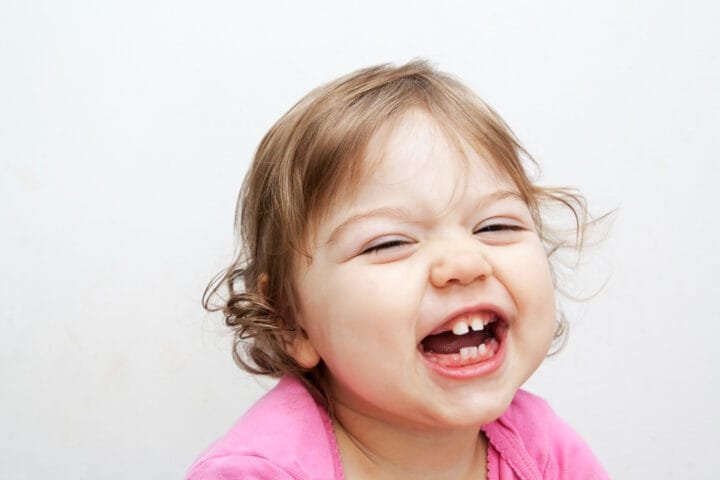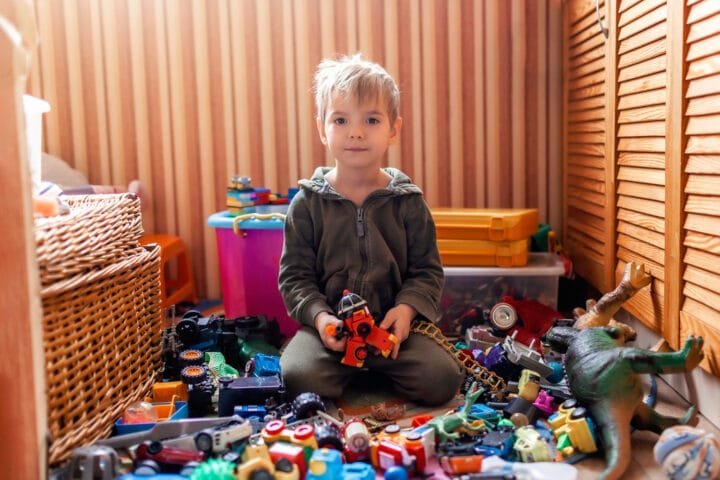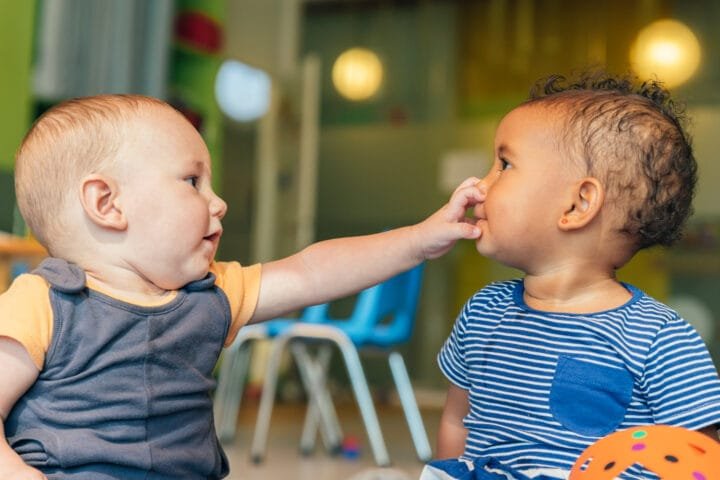Bye-Bye Baby Teeth: A First-Time Parent’s Guide to the Tooth Fairy Years
Remember those gummy grins and the first pearly whites peeking through your baby’s gums? Time flies, and those adorable baby teeth will make way for a sparkling adult smile before you know it. This bittersweet milestone, filled with excitement, wonder, and maybe a few parental anxieties, marks a significant step in your child’s development. But don’t worry, fellow first-time parents! This comprehensive guide will equip you with everything you need to know to navigate this exciting transition. It will take you from the first wiggle to the final farewell.
When Do Those Tiny Chompers Go?
The process of losing a tooth begins earlier than you might expect! While visible signs typically appear between 4 and 7, the process starts with developing permanent teeth beneath the gums. These new teeth gradually push on the roots of the baby teeth, causing them to loosen and eventually fall out.
Typical Timeline
Most children start losing teeth around age 6, though this can vary. Consider it a miniature version of puberty – it happens in a similar time frame! Genetics plays a significant role, so if you or your partner experienced early or late tooth loss, your child might follow a similar pattern. According to the American Dental Association, girls lose their teeth earlier than boys.
The Usual Order of Events
The lower front teeth (lower central incisors) are usually the first to leave, followed by the upper front teeth (upper central incisors). It’s like a choreographed dance, starting from the centre of your child’s smile. This pattern continues with the lateral incisors, first molars, canines, and finally, the second molars.
Factors Influencing Timing:
- Genetics: Family history can strongly predict when your child will start losing teeth. Studies have shown that genetic factors account for up to 60% of tooth eruption and shedding variation.
- Nutrition: A balanced diet rich in calcium and vitamin D is vital for maintaining healthy teeth and can influence when your child begins losing teeth. Calcium strengthens tooth enamel, while Vitamin D aids calcium absorption. Ensure your child enjoys dairy products, leafy green vegetables, and fortified foods.
- Oral Health: Maintaining healthy oral hygiene habits, such as regular brushing and flossing, can help ensure baby teeth remain healthy until they naturally fall out. Poor dental hygiene can lead to premature tooth loss due to decay or infection.
- Systemic Conditions: Certain medical conditions, such as hypothyroidism or Down syndrome, can delay tooth eruption and shedding.
Recognizing the Signs: Is That Tooth Ready to Go?
How can you tell if your little one is about to join the toothless wonder club? Here are some telltale signs:
- The Wiggle: This is the apparent sign! A loose tooth will feel wobbly and move back and forth. Encourage gentle wiggling (with clean hands!), but discourage excessive force. We want the tooth to come out naturally when it’s ready.
- Gum Changes: The gums around the loose tooth might appear slightly red or swollen. This is normal and usually subsides once the tooth is out. However, consult your dentist if you notice excessive swelling, bleeding, or pus, which could indicate an infection.
- Peeking Through: You might even see the adult tooth starting to emerge behind or below the baby tooth. It’s like a sneak peek at the new and improved smile! Sometimes, the permanent tooth can erupt before the baby tooth falls out, resulting in “shark teeth.” This is usually nothing to worry about, but it’s worth mentioning to your dentist.

Navigating Loose Teeth: Dos and Don’ts
A loose tooth can be a source of excitement and anxiety for your child. Here’s how to help them navigate this new experience:
Dos
- Encourage Gentle Wiggling: As mentioned earlier, gentle wiggling can help the tooth loosen naturally. You can even make it a game! This stimulates blood flow to the area and allows the tooth to detach from the gums.
- Maintain Oral Hygiene: Regularly brush and floss, even around a loose tooth. A soft-bristled toothbrush can prevent discomfort. Use a pea-sized amount of fluoride toothpaste and teach your child to spit it out after brushing.
- Offer Soft Foods: While the tooth is loose, stick to soft foods like yogurt, soup, and pasta to avoid accidental dislodgement (and potential drama!). Indented and sticky foods can put extra pressure on the loose tooth, causing discomfort or premature loss.
- Provide Comfort: If your child experiences discomfort, offer a cold compress or an over-the-counter pain reliever (always consult your pediatrician or dentist first). A cold compress can reduce inflammation and numb the area, while a pain reliever can provide temporary relief.
Don’ts
- Force it Out: Never force a tooth out before it’s ready. This can cause unnecessary pain and damage to the gums and underlying permanent teeth. Allow the tooth to fall out naturally to minimize infection risk and ensure proper healing.
- Tie it to a Doorknob: We’ve all heard the old doorknob trick, but avoiding this method is advisable. It can be traumatic and injury-causing. Sudden and forceful removal of a tooth can cause excessive bleeding and damage to the surrounding tissues.
- Ignore Excessive Pain or Bleeding: If your child experiences significant pain, swelling, or bleeding, consult your dentist. These could be signs of an infection or other dental issues that require professional attention.
Making it Magical: The Tooth Fairy and Beyond.
Losing a tooth is a big deal! It’s a rite of passage, a childhood milestone worth celebrating. And what better way to do that than with a visit from the tooth fairy?
Keeping the Tradition Alive
The tooth fairy tradition is a fun and exciting way to mark this special occasion. Place the lost tooth under the pillow, and let the magic unfold! You can even add a sprinkle of “fairy dust” (glitter) for an extra touch of enchantment. This tradition has been around for centuries and originated in Europe.
Creative Tooth Fairy Ideas
- Personalized Notes: Leave a small note from the tooth fairy congratulating your child on their lost tooth and encouraging healthy oral hygiene. Creating a particular “tooth fairy” handwriting type would be more authentic.
- Small Gifts: A small toy, a book, or a particular coin can make the experience even more memorable. Consider choosing gifts that promote oral health, such as an upgraded toothbrush, flavoured floss, or a fun-shaped timer for brushing.
- Tooth Fairy Receipts: Create a cute receipt acknowledging the tooth exchange. You can find printable templates online or create your own. This is a fun way to document the transaction and add whimsy.
- Fairy Doors: Install a tiny “fairy door” on your child’s room wall. This adds a magical touch and allows your child to imagine the tooth fairy entering and leaving their room.
Documenting the Journey
Consider creating a “tooth chart” to track which teeth have fallen out and are still hanging. You can find printable charts online or create your own. You can also take photos of your child with their missing teeth – these will be treasured memories in the future!
Turning it into a Learning Opportunity
Use this opportunity to teach your child about oral hygiene. Explain how brushing and flossing help keep their teeth healthy and strong and how regular dental checkups ensure their smile stays bright. You can use books, videos, and games to make learning about dental health fun and engaging.
Beyond the Tooth Fairy: Caring for Growing Smiles
Once the excitement of the tooth fairy visit subsides, shift your focus to the long-term health of your child’s growing smile. This stage sets the foundation for a lifetime of healthy dental habits and confident smiles.
Brushing and Flossing
- Start Early: Establish an excellent oral hygiene routine before your child’s first tooth erupts. Gently clean their gums with a soft, damp cloth after feedings. When the first tooth appears, give the child a soft-bristled toothbrush and a smear of fluoride toothpaste the size of a grain of rice. The American Academy of Pediatric Dentistry (AAPD) recommends this minimal amount for children under 3 to minimize fluoride ingestion. For children three and older, use a pea-sized amount of fluoride toothpaste.
- Floss Daily: Flossing removes food particles and plaque between teeth, preventing cavities and gum disease. Start flossing as soon as your child has two touching teeth. You can use floss picks or traditional floss, whichever your child finds easier to handle. The AAPD recommends parental assistance with flossing until children develop the talent to do it themselves, usually around age 8.
- Make it Fun: Turn brushing and flossing into a game or song to make it more enjoyable for your child. You can use a timer, play their favourite music, or let them choose their toothbrush and toothpaste from their favourite characters. Positive reinforcement and encouragement go a long way to establishing positive habits. Consider using a reward chart to track their brushing and flossing progress.
Regular Dental Checkups
- First Visit by Age One: The AAPD recommends that a child’s first dental visit be by their first birthday or within six months of their first tooth erupting. This early visit allows the dentist to assess your child’s oral health, identify any potential issues, and provide guidance on proper oral hygiene practices. Early detection of dental problems can prevent more severe issues later.
- Regular Checkups: Schedule regular dental checkups every six months to monitor your child’s dental development and address any potential issues early on. During these checkups, the dentist will examine your child’s teeth and gums, clean them, and apply fluoride treatments to strengthen enamel and prevent cavities. The dentist will also discuss proper oral hygiene techniques and answer any questions.
Dietary Habits for Healthy Teeth
- Limit Sugary Drinks and Snacks: Sugary treats contribute to tooth decay—bacteria in the mouth feed on sugar, producing acids that erode tooth enamel. Offer healthy snacks like fruits, vegetables, and dairy products instead. Cheese, in particular, is an ideal choice as it stimulates saliva production, which neutralizes acids and remineralizes teeth.
- Drink Plenty of Water: Water rinses away food particles and keeps the mouth hydrated, diluting acids and reducing tooth decay. Encourage your child to drink water throughout the day, especially after meals and snacks.
- Encourage a Balanced Diet: A diet rich in calcium, vitamin D, and other essential nutrients is crucial for strong teeth and gums. Calcium strengthens tooth enamel, while Vitamin D aids calcium absorption. Ensure your child enjoys dairy products, leafy green vegetables, and fortified foods. Phosphorus in protein-rich foods like meat, poultry, and fish also affects tooth health.
Addressing Common Concerns and Fears
Losing teeth can be emotional for children. They may experience anxiety, fear, or even sadness about losing a part of themselves. It’s essential to address these concerns with empathy and reassurance.
Common Fears
- Pain: Reassure your child that losing a tooth is usually not painful. Explain that the wiggling sensation might feel strange but shouldn’t hurt. If they experience discomfort, offer comfort measures like cold compresses or pain relievers (as advised by your dentist or pediatrician).
- Blood: Small bleeding is expected when a tooth falls out. Explain that it’s just a tiny scrape and will stop quickly. Show them how to apply gentle pressure with a clean cloth or gauze.
- The Tooth Fairy: Some children may be afraid of the tooth fairy. Talk about the tooth fairy positively and reassuringly, emphasizing the fun and excitement of the tradition. You can read stories or watch videos about the tooth fairy to alleviate their fears.
- The Unknown: Children may be anxious about mouth changes. Please explain the tooth loss process, emphasizing that it’s a natural part of growing up and every one must pass through it.
Tips for Addressing Fears
- Listen and Validate: Listen attentively to your child’s concerns and acknowledge their feelings. Don’t dismiss their fears, even if they seem irrational to you.
- Provide Information: Explain the tooth loss process in an age-appropriate manner. Use books, videos, or diagrams to illustrate the process.
- Offer Reassurance: Reassure your child that losing teeth is normal and they have nothing to fear. Emphasize that you’re there to support them through the process.
- Make it Fun: Focus on the positive aspects of losing teeth, such as the excitement of the tooth fairy’s visit and the anticipation of their adult teeth coming in.
- Seek Professional Help: If your child’s fears are severe or persistent, consider seeking professional help from a child psychologist or therapist.
The Importance of Early Oral Hygiene
Establishing effective oral hygiene habits early is crucial for your child’s overall health and well-being. Healthy teeth and gums contribute to a beautiful smile and play a vital role in speech development, chewing, and overall nutrition.
Benefits of Early Oral Hygiene
- Prevents Tooth Decay: Tooth decay, also known as cavities, is one of the most common chronic childhood diseases. It occurs when bacteria in the mouth produce acids that erode tooth enamel. Regular brushing and flossing remove plaque, the sticky film that harbours these bacteria, preventing tooth decay.
- Reduces Gum Disease: Gum is an infection of the tissues surrounding and supporting teeth. It can lead to tooth loss and other health problems. Effective oral hygiene practices prevent gum disease by removing plaque and bacteria from the gum line.
- Promotes Proper Jaw Development: Proper jaw development is essential for tooth alignment and a healthy bite. Early dental care can help identify and address any potential issues that may affect jaw development, such as thumb sucking or tongue thrusting.
- Improves Overall Health: Studies have linked poor oral health to systemic conditions, such as heart disease, diabetes, and respiratory infections. Maintaining healthy oral hygiene can reduce the risk of these conditions.
- Boosts Self-Confidence: A healthy smile can increase self-confidence and self-esteem. It can also improve their social interactions and overall quality of life.
Tips for Encouraging Good Oral Hygiene:
- Be a Role Model: Children learn by example. Let your child see you brushing and flossing regularly.
- Make it a Routine: Establish a consistent oral hygiene routine. Brush and floss simultaneously every day, after breakfast and before bed.
- Choose the Right Tools: Use a soft-bristled toothbrush and fluoride toothpaste appropriate for your child’s age. Replace toothbrushes every 3-4 months or sooner if bristles are frayed.
- Use Positive Reinforcement: Praise your child for their efforts in maintaining proper oral hygiene. Offer rewards for consistent brushing and flossing, such as stickers or small toys.
- Visit the dentist Regularly: Schedule regular dental checkups every six months. This allows the dentist to monitor your child’s oral health, provide professional cleanings, and address potential issues early on.
Embracing the Wiggle Wobble Years
Losing baby teeth is a natural and exciting part of childhood. By understanding the process, knowing what to expect, and making it a positive experience, you can help your child navigate this milestone with confidence and joy. Celebrate those missing teeth, encourage good oral hygiene habits, and cherish those adorable gap-toothed grins! These are the “wiggle wobble years,” a time of transition and growth, filled with wonder and discovery. Embrace this time and help your child develop a lifelong love for their smile.
FAQs
Most children begin losing their baby teeth around 6, although it can vary from child to child. Factors like genetics, nutrition, and oral health can influence the timeline.
The most obvious sign is a wiggly tooth! You might also notice slight redness or swelling in the gums around the loose tooth. In some cases, you might even see the adult tooth starting to emerge.
Talk to your child about their fears and offer reassurance. Explain that losing teeth is a normal part of growing up and usually doesn’t hurt. You can also make it fun by focusing on the excitement of the tooth fairy visit.
Encourage gentle wiggling, but never force the tooth out. If your child is experiencing discomfort, offer a cold compress or over-the-counter pain reliever (as advised by your dentist or pediatrician).
Start early! Clean their gums with a soft, damp cloth before your child’s first tooth erupts. Once teeth emerge, brush twice daily with a soft-bristled toothbrush and a smear of fluoride toothpaste (pea-sized for children three and older). Begin flossing as soon as two teeth touch. Make it fun with songs, timers, and rewards. Most importantly, schedule regular dental checkups every six months.
Related Posts































































































